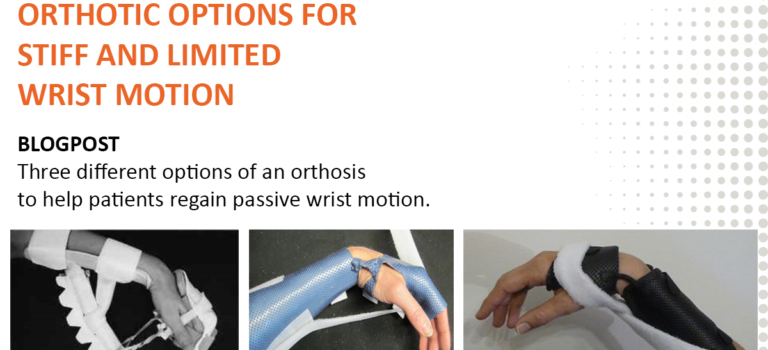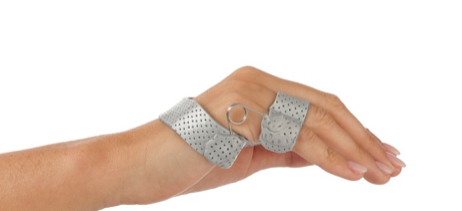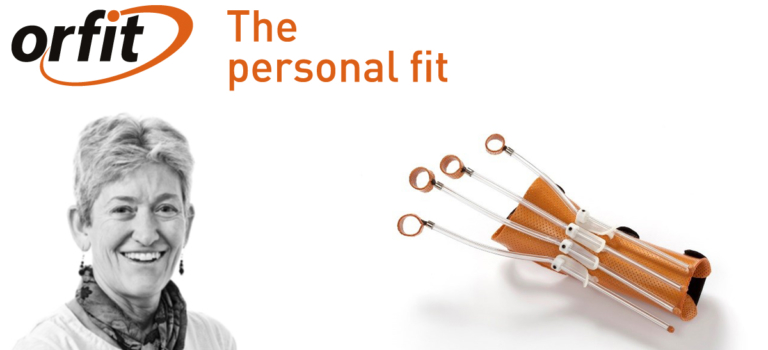
The Peripheral Nerves: A Quick Assessment of Nerve Functioning or “Rock, Paper, Scissors!”
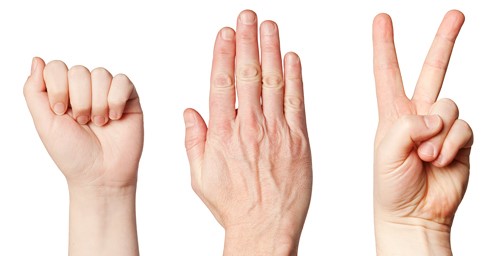
Here is a creative method to assess nerve functioning in the hand and some ideas for orthotic interventions. Using the universally known children’s game of “Rock, Paper, Scissors”, one can assess the nerve functioning of the three peripheral nerves of the upper extremity.
1) Median Nerve: Rock Position
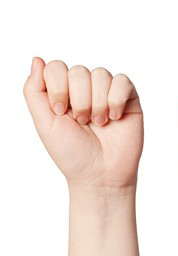
Pronated full fist
Muscles utilized in this position:
Pronator Teres, Flexor Carpi Radialis, Palmaris Longus, Flexor Digitorum Superficialis, Flexor Digitorum Profundus I and II, Pronator Quadratus, Flexor Pollicis Longus, Abductor Pollicis Brevis, Flexor Pollicis Brevis (superficial head), Opponens Pollicis, Lumbricals I and II.
Orthotic Options:
Injury to the Median Nerve can significantly affect the thenar muscles of the thumb and limit functional ability. A web spacer may be appropriate to stretch the first web space and prevent an adduction contracture due to the unopposed Adductor Pollicis muscle. And a short opponens orthosis can be extremely beneficial for assisting with thumb function.

2) Radial Nerve: Paper Position
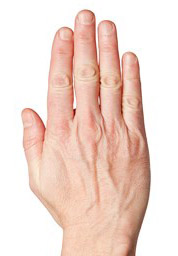
Extended wrist and digits with forearm pronated, add supination with open palm
Muscles utilized in this position include:
Supinator, Extensor Carpi Radilais Longus and Brevis, Extensor Carpi Ulnaris, Extesor Digitorum Communis, Extensor Indicis Proprius, Extensor Digiti Minimi, Extensor Pollicis Longus and Brevis, Abductor Pollicis Longus.
Orthotic Options:
The patient is limited by the inability to position the wrist and fingers in extension. Any orthosis that supports the wrist and fingers in extension can be beneficial. The orthosis should allow for full flexion of the fingers but dynamically pull the fingers and wrist into extension to avoid overstretching of the denervated muscles. Assess each client to determine if the wrist and fingers or just the wrist needs orthotic support.
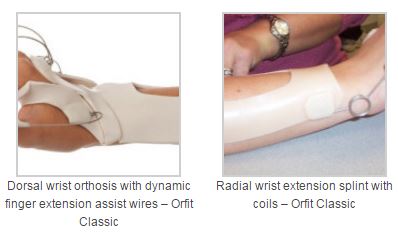
3) Ulnar Nerve: Scissors Position
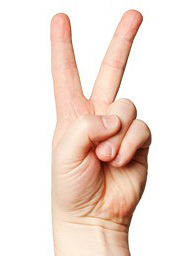
4th and 5th fingers MCP and PIP joints are flexed; 2nd and 3rd digits are extended and abducted away from each other; Thumb CMC is adducted and the IP is flexed.
Muscles utilized in this position include:
Flexor Carpi Ulnaris, Flexor Digitorum Profundus to III and IV, Abductor Digiti Minimi, Opponens Digiti Minimi, Flexor Digiti Minimi, Lumbricals III and IV, Palmar and Dorsal Interossei, Flexor Pollicis Brevis (deep head), Adductor Pollicis.
Orthotic Options:
If Ulnar Nerve damage is evident, an anti-ulnar claw orthosis may be appropriate to keep the MCP joints in flexion and help prevent overstretching of the intrinsic muscles. This also allows the extrinsic extensor force to be transmitted distally to extend the IP joints.

In addition, you can easily assess the functioning of the following nerves:
4) Anterior Interosseous Nerve: Making an ‘OK’-sign
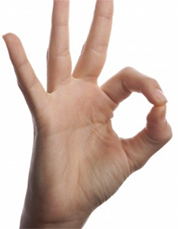
Thumb tip to index fingertip making an “O” sign
Muscles utilized in this position include:
Flexor Digitorum Profundus I, Flexor Pollicis Longus, Pronator Quadratus and sometimes, Flexor Digitorum Profundus II.
Orthotic Options:
Primary loss of the thumb tip for pinch can be helped by an orthosis for the thumb IP joint that keeps the joint in flexion for pinch activities.
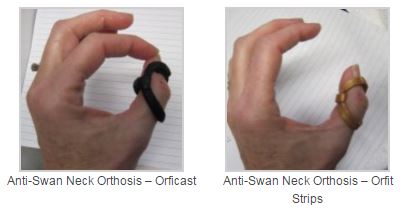
5) Posterior Interosseous Nerve (deep motor branch of the radial nerve): Giving a ‘High Five’
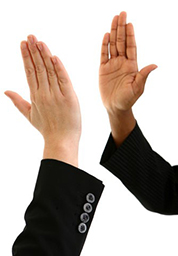
Full extension of the wrist and thumb and finger MCP and IP joints.
Muscles utilized in this position include:
Extensor Carpi Ulnaris, Extensor Carpi Radialis Brevis, Extensor Digitorum Communis, Extensor Digiti Minimi, Extensor Indicis Proprius, Extensor Pollicis Longus and Brevis, Abductor Pollicis Longus.
Orthotic Options:
Orthoses described earlier for Radial Nerve injury can be used. With a partial lesion of the Posterior Interosseous Nerve, a yoke orthosis may be helpful at assisting with the individual finger’s lack of extension by connecting it to an adjacent finger.
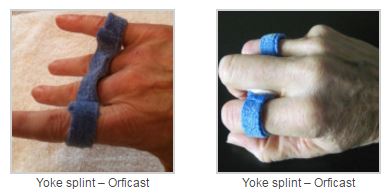
Reference
Davidson, A. W. (2003). Rock–paper–scissors. Injury, 34(1), 61-63.
Questions?
If you have a question or comment, please post it in the Orfit Splinting & Rehabilitation Group on Facebook, or send an email to welcome@orfit.com.
![]()

Written by Debby Schwartz, OTD, OTR/L, CHT
Physical Rehabilitation Product and Educational Specialist at Orfit Industries America.
Debby is a certified hand therapist with over 36 years of clinical experience. She completed her Doctorate of Occupational Therapy at Rocky Mountain University of Health Professions in 2010. She has worked at Orfit Industries America as Product and Educational Specialist since 2007.
Debby is also an adjunct professor at the Occupational Therapy Department of Touro University, School of Health Sciences, and at the Occupational Therapy Department at Yeshiva University, Katz School of Science and Health in NYC. She has written many book chapters in the field of hand therapy and multiple articles for hand therapy journals, including the ASHT Times and the Journal of Hand Therapy. She has published a new textbook on orthotic fabrication together with Dr. Katherine Schofield, entitled “Orthotic Design and Fabrication for the Upper Extremity: A Practical Guide”.
![]()
Contact us for more product information or find your local distributor here.
![]()

